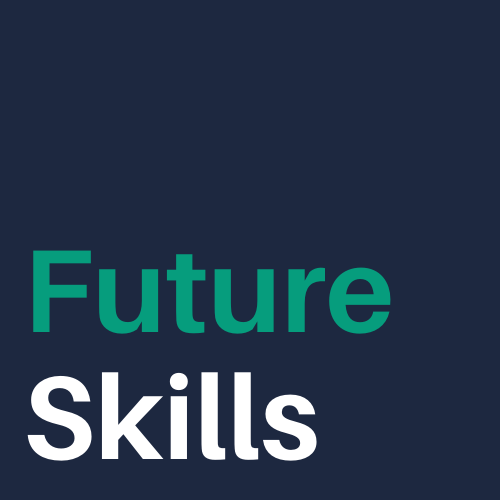
Last August, I spent the month teaching my audience how to upskill themselves. Upskilling is one of those words that’s still a little bit out of reach for most people. It hasn’t entered mainstream just yet.
While term upskilling isn’t at the top of most people’s minds, it’s about to go mainstream in people’s professional lives in 2020.
First, people love to kick off a new decade with big, bold moves. People are eager to build on ideas from the previous decade and start again, both in their professional and personal lives.
Second, the pace at which change is happening in our workplace is staggering. LinkedIn featured two posts this past week that highlighted the shifts we’re already seeing in the workplace. The first, “Where have all the secretaries gone?” covered the disappearance of administrative assistant jobs, often staffed by women without degrees. There was a quote in that article that really struck me:
Rita Maxwell had no idea she was about to lose the job she’d had for nearly 20 years when her boss told her to meet him in the conference room at the end of the work day. “I was completely taken aback when he called me into the meeting room to let me know my position had been eliminated,” said Maxwell, who was let go in early 2017. “There’s just not a lot of loyalty anymore.” Administrative assistant jobs helped propel many women into the middle class. Now they’re disappearing.
The death of employee loyalty is just one of many changes happening in our workplace.
Traditional career paths are changing
The second article that LinkedIn highlighted was on the teacher shortage. More teachers are opting out of teaching because of low pay. While our lack of teachers is a national problem, it struck me because teaching used to be a sure fire fulfilling career path. It was the secure job that people often changed into when they wanted an escape or were burned out. Now days, not so much.
In addition to the two articles, I also stumbled on this map of the fastest disappearing jobs in the US by state.
On top of that, we see more articles about the new types of jobs created by new technology. Articles like this one, which highlights architects working in video game design as a creative way to apply their skills. It’s yet another traditional career path that’s adapting to our new world of work.
It’s also enough to get any burnt out architect thinking, how do I get into that?!
It’s time to upskill yourself
The result is that a lot more people are starting to see the impact of new technology in their workplace. And they’re looking for ways to adapt.
Upskilling is adaptation. Though upskilling isn’t a household term just yet, it will be in 2020. Recent changes in the workplace are forcing us to look at our future job security.
Upskilling is a verb and a mindset. It’s the act of learning new skills to improve your professional life. It’s also a willingness to accept that things are changing. Upskilling is also the ability to take charge of your learning and development. The takeaway is that you can’t rely on employers to teach you the skills you need. You have to go after them yourself.
While the term upskilling is frequently thrown around in articles as if one can just upskill tomorrow, upskilling takes work. Every time I read an article in a big publication (looking at you HBR) by a corporate leader declaring that our collective workforce simply needs to upskill, I roll my eyes. Often the authors of these articles haven’t actually upskilled themselves.
In fact, upskilling is downright hard. I say this as someone who’s upskilling to learn data science. I also write that as someone who just wrote a book teaching people how to upskill. It’s hard because we haven’t been taught how to do it.
Last year, the publication Tech in Asia wrote a piece called How to stay relevant in today’s rapidly-changing job market. They put the challenges of upskilling in focus:
The benefits of the comfort zone are appealing. Steady (though not always satisfying) incomes, “secure” jobs, relaxed routines, and predictable schedules are as comforting to humans as they are to animals. In this phase, people limit their learning to things they learn on the job, not knowing that yesterday’s lessons rarely solve tomorrow’s challenges… Without skill upgrades or a willingness to learn, people are caught in a rut. They are unable to see when the next trend is about to catch up or when the current one is about to die. For the few that can see the new trend, the pain of having to upgrade their skills far supersedes the pleasure of staying in the comfort zone.
The comfort zone is cozy. But it’s the opposite of adaptation. A lot of mid-career professionals need to escape the comfort zone.
Making a plan in 2020 to upskill yourself
If you’re curious about how to upskill yourself I have two podcasts for you.
To understand why upskilling is so important, listen to How to Outsmart Artificial Intelligence and Develop Your Future.
The listen to How to Upskill Yourself.
And if you’re really into it this year, I wrote a book that teaches you how to upskill yourself. My book, Punch Doubt in the Face: How to Upskill, Change Careers, and Beat the Robots, shows you exactly how to learn new skills and change paths.

